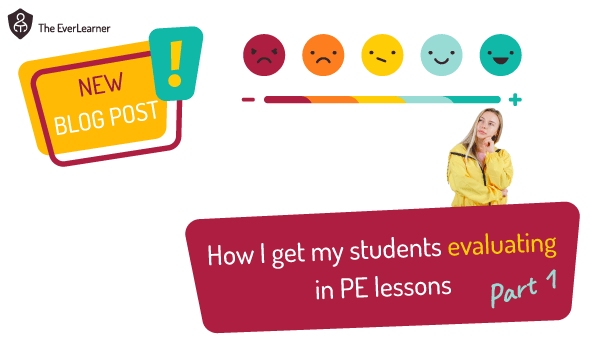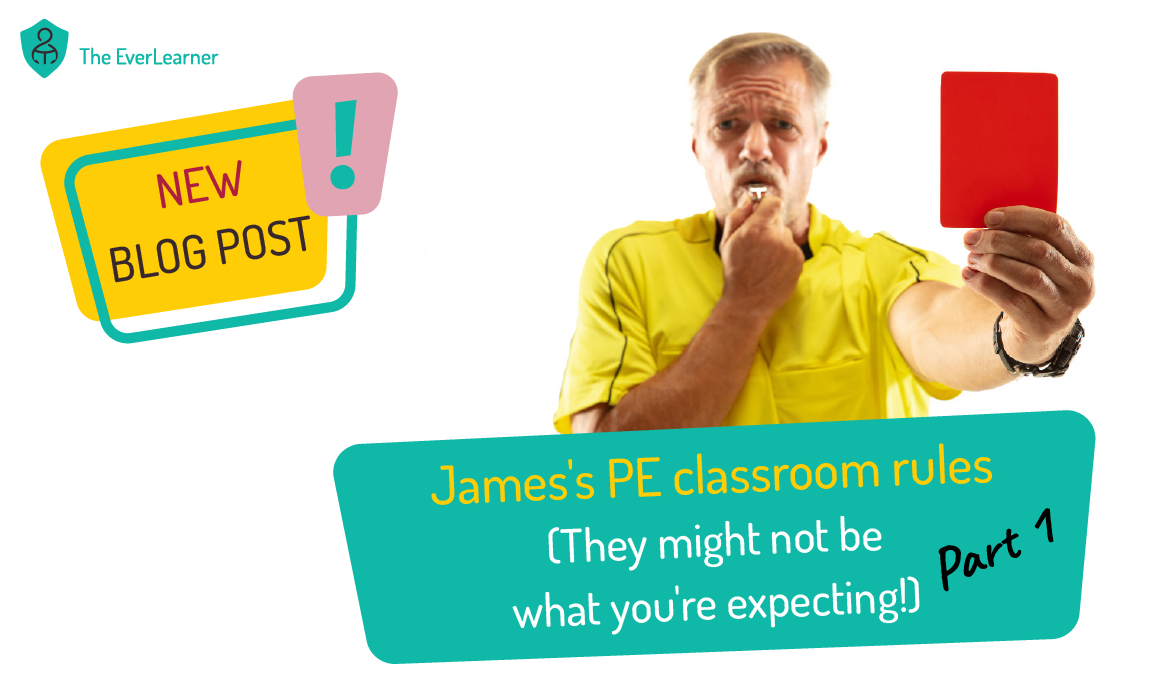My three favourite evaluation activities in PE lessons
Throughout my PE teaching career I have been using three core mechanisms for developing evaluative skills in students. These activities are simple, sometimes noisy and always fun and challenging, and they are designed with the idea that “evaluating is a behaviour” firmly in mind.
In this post, a progression from my previous writing on the ‘Evaluate’ skill, I want to simply present to you three activities that you can use in any lesson where the ‘Evaluate’ skill is a focus.
Activity 1: Agreement Circles
This technique is a stock feature of my classroom. When students need to be evaluative or need to justify their responses, I use this technique. Agreement circles build the behaviour of evaluation. This should not be underestimated. Many PE courses have evaluation as a crucial (often AO3) skill. If students need to to write evaluatively, they must be encouraged to behave evaluatively and Agreement Circles achieves this.
In my experience of this activity, ensuring that there is a summary made of all relevant points helps a great deal. I tend to do this on a standard whiteboard or flip-chart but you may find other mechanisms to do so.
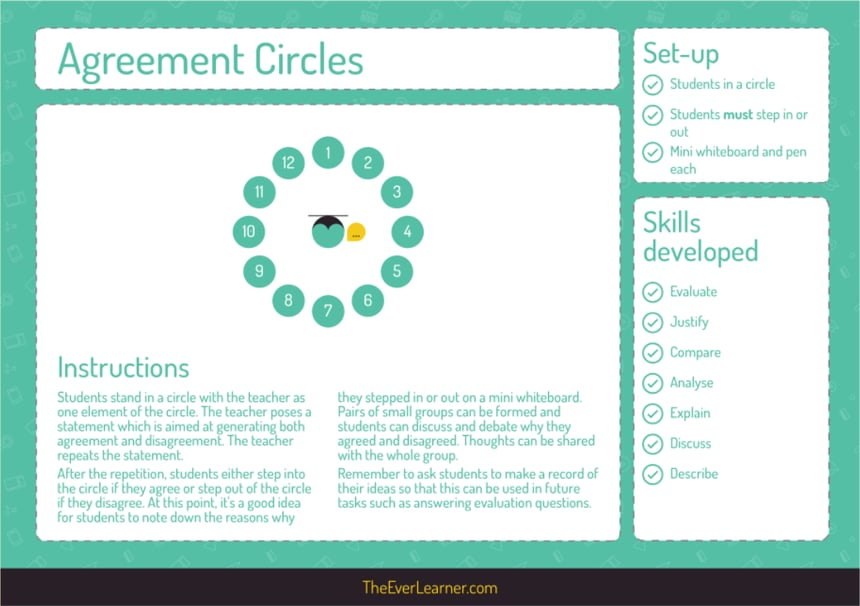
Activity 2: Folded Lines
When teachers first view this activity, they often think it is the same as Agreement Circles. It isn’t. It is critically different in one way:
The teacher chooses the evaluative position that each student must take. Therefore, students become skilled at making evaluations that counter their own, intuitive stance. This prepares students well for evaluative writing.
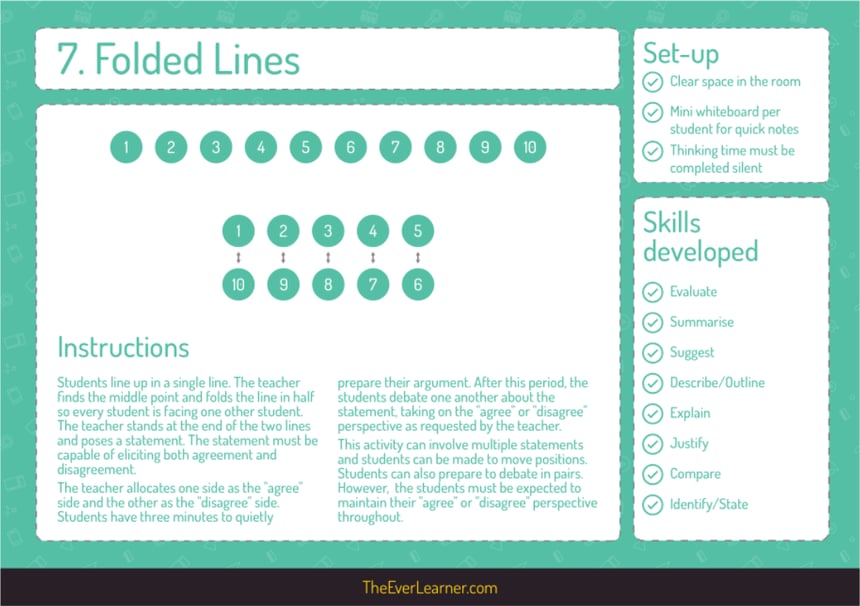
Activity 3: Convince Me
Convince Me is a brilliant activity to utilise when you have a well-established and trusted relationship with a mature group. It works like this:
Ask approximately ¼ of your group to take part. The other ¾ observe only (for now).
Set up this space:
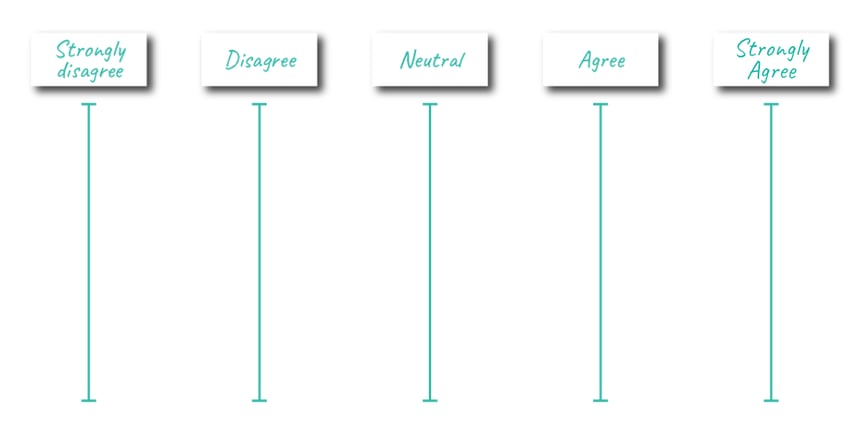
Have all the participants stand on the neutral line and then read a statement. The statement needs to be structured in a way to encourage some people to agree and others to disagree to some extent. There is a skill to this and, if you get everyone going in the same direction, restructure your statement a little.
But, let’s say I use this statement:
It’s pretty likely you will get a response such as this:
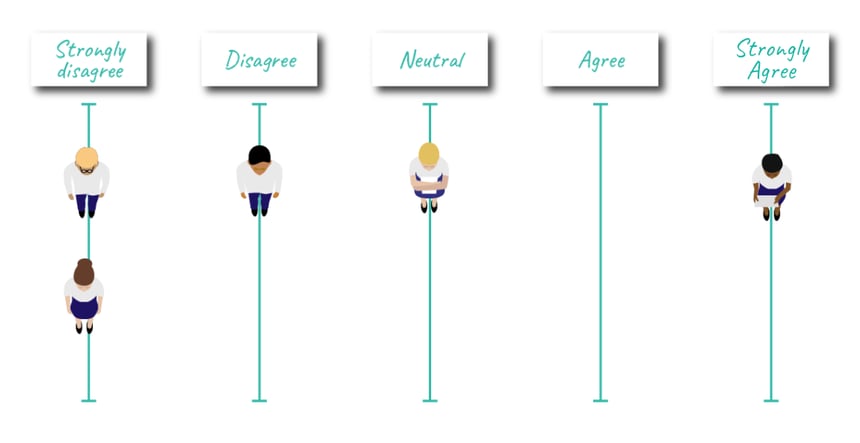
Some students disagree and others are either neutral or agree.
From here forward, the activity really begins. The teacher (you) can now use smart questioning with any of the participants to encourage evaluation and, where relevant, movement of positions. For example, I might ask the person on the strongly disagree line to share their thinking and decision making. Without showing any preference to their ideas, I can then collectively speak to the three students on the disagree/strongly disagree side and ask them whether any of the points encouraged them to move in either direction. Let’s say they don’t move or, perhaps, we get even a deepening of the disagree position such as this:

If this has happened, you can ask the (now four) students on the ‘Disagree’/’Strongly disagree’ side:
Use their responses and go back to ’Strongly agree’ to discuss their points. You may now get a dichotomy of positions. Try to ask each student to specifically answer the points made by the other student.
Excellent prompts and questions include:
- For what reason(s) did you move to this position?
- What is the best evidence you have to justify your position?
- What one thing would you like to say to the people with a different position to encourage them to move towards you?
- What evidence or information would you need for you to change your position?
Once the activity has progressed, you can take a couple of further actions. Firstly, you can flip the grid and ask participants to make positive evaluations about positions that they personally do not agree with. This is useful when evaluating in order to explore the counter arguments. Secondly, you can start to invite questions and observations from the observers. What arguments and points do they want to challenge or hear more about?
Finally, ensure that you get the observers to note down the key ideas that made up the discussion. This allows the students to reassess the ideas in later activities such as writing or exam work.
So, what do you think of these activities? Are they useful? Are they different to how you do things? Will you use them?
Thanks for reading and good luck evaluating!
James
%20Text%20(Violet).png)
